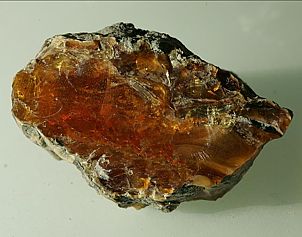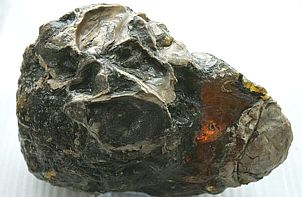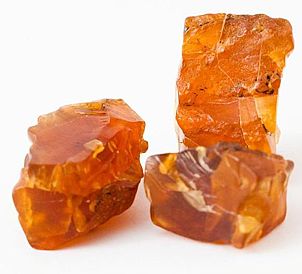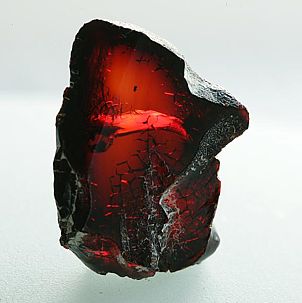In the world there are over 100 well known scientific fossil resins, but few of them can be used as a raw material for jewellery. The age of the resin is crucial as well as the conditions of its fossilisation. The Baltic amber possesses unique physical features due to its contact with sea water in its early stage of birth and its natural migration first along rivers and then for the last few thousands of years with waves towards beaches. Hence, together with its diversity of colours, jewellery products made of Baltic amber account for 90% of the world production of finery made from fossil resins.
Amber from Borneo is the only one which is excavated at a similar rate to Baltic amber. The merit of this resin is the fact that it exists in relatively big lumps, from 20 to 100 grams, nevertheless its beauty acquiesces to other resins as approximately half of them are dark samples with a high percentage of organic debris.
Taking into consideration the beauty of amber, only Dominican amber is comparable to Baltic amber, which is usually transparent, but often with an increase of inclusions and natural fluorescent features. Nonetheless, this resin has much worse physical features, is difficult to cut and polish. Besides, Dominican amber deposits are in sandstone in hard to access mountains, meaning that the cost of its extraction is higher and results in a higher price of the raw material.
Mexican amber, which is excavated from solid stones like the Dominican one, has similar features. However, this resin is darker and many lumps are red which is probably down to the effect of local volcanic activity.
Among North American ambers there is one which deserves our attention called CEDARYT. It is found by the bank of Cedar Lake in Canada. Its features are similar to SUKCYNIT but it is a little older, and because of the small size of excavated lumps does not have any jewellery importance.
In Asia, besides amber from Borneo, BURMIT used to be important and excavated in northern Burma and the adjacent countries. However, at the end of 19th century most local goods were made of Baltic amber because, despite the significant size of BIRMIT lumps, this resin is not easy to process, what is more, it is less beautiful than SUKCYNIT.
In Japan, fossil resins are excavated from the rocks of Kuji Mountain, however, high costs of exploitation and small deposits of this material are the reason why most Japanese traditional goods are produced from Baltic amber. Japanese amber exists in many colourful varieties, from greenish to nearly black, and it is relatively easy to process. During cutting or polishing it discharges a characteristic smell similar to the smell of camphor.
In Europe only SYMETYT used to be excavated on Sicily. However, its mere deposits forced local craftsmen to replace it with imported Baltic amber.




